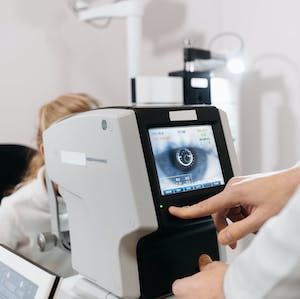High Mortality Rate Observed After COVID-19 Associated Rhino-Orbitocerebral Mucormycosis
The cumulative probability of death was 26% at day 7 and increased to 53% at day 21.

A recent study noted that although an outbreak of COVID-19-associated rhino-orbitocerebral mucormycosis (CAM) occurred in many parts of the world, there are still unknowns regarding the cumulative mortality and risk factors of the condition.
Led by Avinash Ingole, MS, Department of Ophthalmology, Topiwala National Medical College, investigators observed a high mortality rate after rhino-orbitocerebral mucormycosis, while patients with severe COVID-19 or orbital disease are more likely to die within 10 days of admission.
Methods
Ingole and colleagues conducted a retrospective case-control study, including case records of all patients with prior confirmation of COVID-19 treated in house with a diagnosis of CAM between March - May 2021.
All patients diagnosed with CAM after admission or had a minimum follow-up of 30 days were included in the study. The study took place in a tertiary care multispeciality hospital in Mumbai, India.
Additionally, all patients were required to undergo a comprehensive ophthalmic evaluation, with features of CAM recorded from case files. These included best-corrected visual acuity (BCVA), proptosis, ptosis, extraocular muscle restriction, pupillary reaction, and CAM-specific features, such as black eschar on the face, nostrils, palate, or lids.
The main outcomes measured were the cumulative mortality in CAM using survival analysis, with death as the censoring variable and Kaplan-Meier curves to depict cumulative probability of survival at various time points.
Findings
They included 73 consecutive patients with CAM during the study period, with a mean age of 53.5 years and made up of 66% men (n = 48). Data show the sinus involvement with CAM was bilateral in 17 patients (23%) and unilateral in 56 patients (77%) and orbital involvement was bilateral in 6 patients (8%) and unilateral in 62 (85%).
The development of CAM was observed to occur at a median of 28 days after recovery from COVID-19 (IQR, 15 - 45; range, 4 - 90).
Of the 73 patients with CAM, a total of 26 died (36%), while a total of 5 of 52 patients underwent orbital exenteration. The cumulative probability of death was 26% (95% CI, 16% - 41%) at day 7 and increased to 53% (95% CI, 39% - 69%) at day 21.
Additionally, investigators noted those who died had more severe COVID-19 disease before CAM as indicated by more need for assisted ventilation (42% versus 13%) and longer mean duration of supplemental oxygen (15.3 versus 2.1 days).
In terms of visual acuity, the group had no perception of light (35% versus 6%), ptosis (23% versus 15%), proptosis (88% versus 53%), or total ophthalmoplegia (35% versus 40%).
Data show 18 of 51 patients (35%) underwent sinus debridement, 5 of 52 patients (10%) underwent exenteration, and 48 patients (66%) were administered intravenous lyophilized amphotericin B.
Further, a multivariate Cox proportional hazard regression analysis showed that receiving mechanical ventilation in the past was associated with an almost 9-fold increased risk of death (hazard ratio, 9.98; 95% CI, 2.13 - 38.65, P = .003).
Patients with visual acuity of light perception or better had a 46% lower risk of death (HR, 0.56; 95% CI, 0.32 - 0.98, P = .04). The administration of intravenous amphotericin B administration was associated with a reduced rate of exenteration (0 versus 5 of 25, P <.001).
Multivariate analysis showed those who received intravenous amphotericin B had a 69% reduced risk of death (HR, 0.32; 95% CI, 0.06 - 1.43, P = .13).
Takeaways
“The cumulative mortality from CAM crossed 50% at 3 weeks after admission; therefore, this infection requires urgent treatment with a combination of FESS and intravenous antifungal agents to salvage life,” investigators wrote.
The study, “Cumulative Mortality and Factors Associated With Outcomes of Mucormycosis After COVID-19 at a Multispecialty Tertiary Care Center in India,” was published in JAMA Ophthalmology.